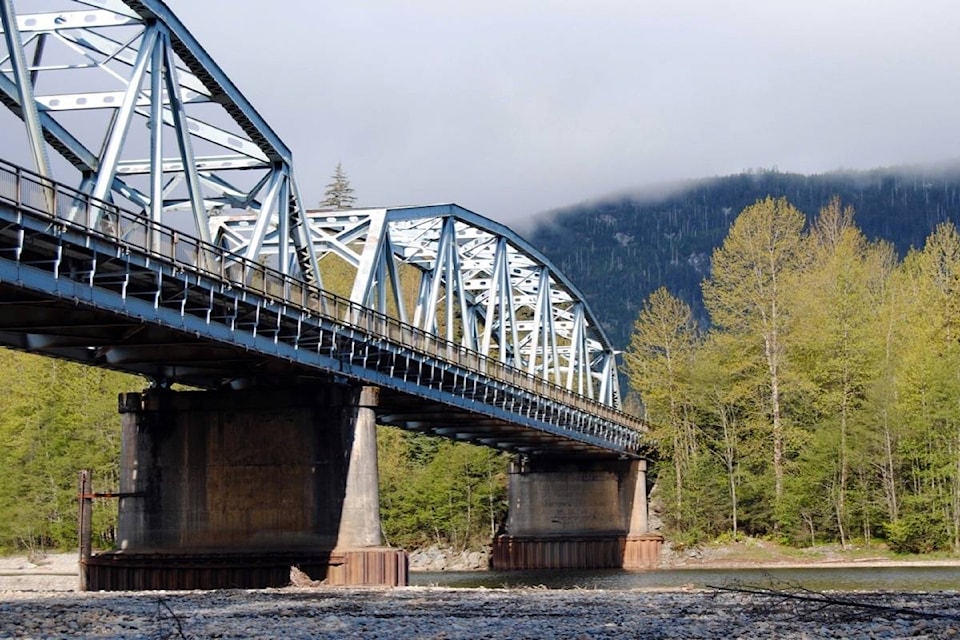Engineers contracted by the District of Kitimat are currently assessing the costs of rehabilitating the Haisla Bridge as an alternative to finding the $50 to $60 million to replace it.
District mayor Phil Germuth and Chief Administrative Officer Warren Waycheshen met with the Northern Sentinel to discuss the assessment of the bridge, the results of which are expected to be available by June at the latest.
“Even though the bridge is still in good shape, it has reached the end of its life and requires either rehabilitation or replacement,” said Germuth. “The time to do either is now, during the downtime before the LNG project comes online.”
He said it was quite clear after the town experienced a number of bottlenecks at the bridge during Rio Tinto Alcan’s Kitimat Modernization Project (KMP) that something would have to be done to the bridge before the proposed LNG project begins in Kitimat.
“During the modernization it came to light that there was a problem with the bridge,” said Germuth. “If there was ever critical damage to the bridge it would result in an 85km round trip for traffic to get from the town to the service centre.”
He said the proposed LNG project would experience major delays should the bridge not be completed by the time work commences.
Waycheshen said the engineers, COWI North America, are costing a number of upgrades for the bridge, primarily seismic upgrades, increasing the bridge’s load bearing capacity and increasing the height of the spacing of the girders to allow bigger loads to cross the bridge.
The Haisla Bridge was built in 1953, at a time when construction specifications didn’t include requiring bridges to be able to withstand seismic activity such as earthquakes, and that the rehabilitation would bring the bridge in line with those specifications.
He said the rehabilitation would also involve increasing the load bearing capacity from its current 65,000 kilograms, to 85,000 kilograms. The height of the girders above the bridge would be increased from 4.2 metres to 5.1 metres.
Work would also be done to improve the bridge deck as well as painting the girders.
“The engineers are going to give us numbers to upgrade the bridge. They are also looking at how long those upgrades would extend the bridge’s lifespan,” said Waycheshen.
A new bridge, which he said would be built upstream from the existing bridge, would have a lifespan of 75 years. Until the engineers complete the assessment it’s unclear whether rehabilitation would extend the current bridge’s lifespan by the same number of years, and whether the money wouldn’t be better spent just replacing the bridge.
“Our potential funding partners need to see a business plan detailing the costs of both rehabilitating the bridge, or replacing it, before they consider funding,” said Waycheshen.
He said a new would be built alongside the existing bridge, 16 metres apart, and that the old bridge would most likely become a pedestrian bridge.
The new bridge would take an eastimated two years to complete, and both Germuth and Waycheshen said they hoped construction would begin by the end of 2018 should funding be secured.
The district would have to cover a third of either the rehabilitation or the bridge replacement costs, the other two-thirds coming from the provincial and federal governments.
Germuth said council would be looking at strategic partners in the district to contribute to the costs of either rehabilitating or replacing the bridge.
Waycheshen said in a study conducted in late 2016 by the provincial Ministry of Transportation on the potential for development along the West Side Corridor along highways 16 and 37, the Haisla Bridge was identified as a major bottleneck.
